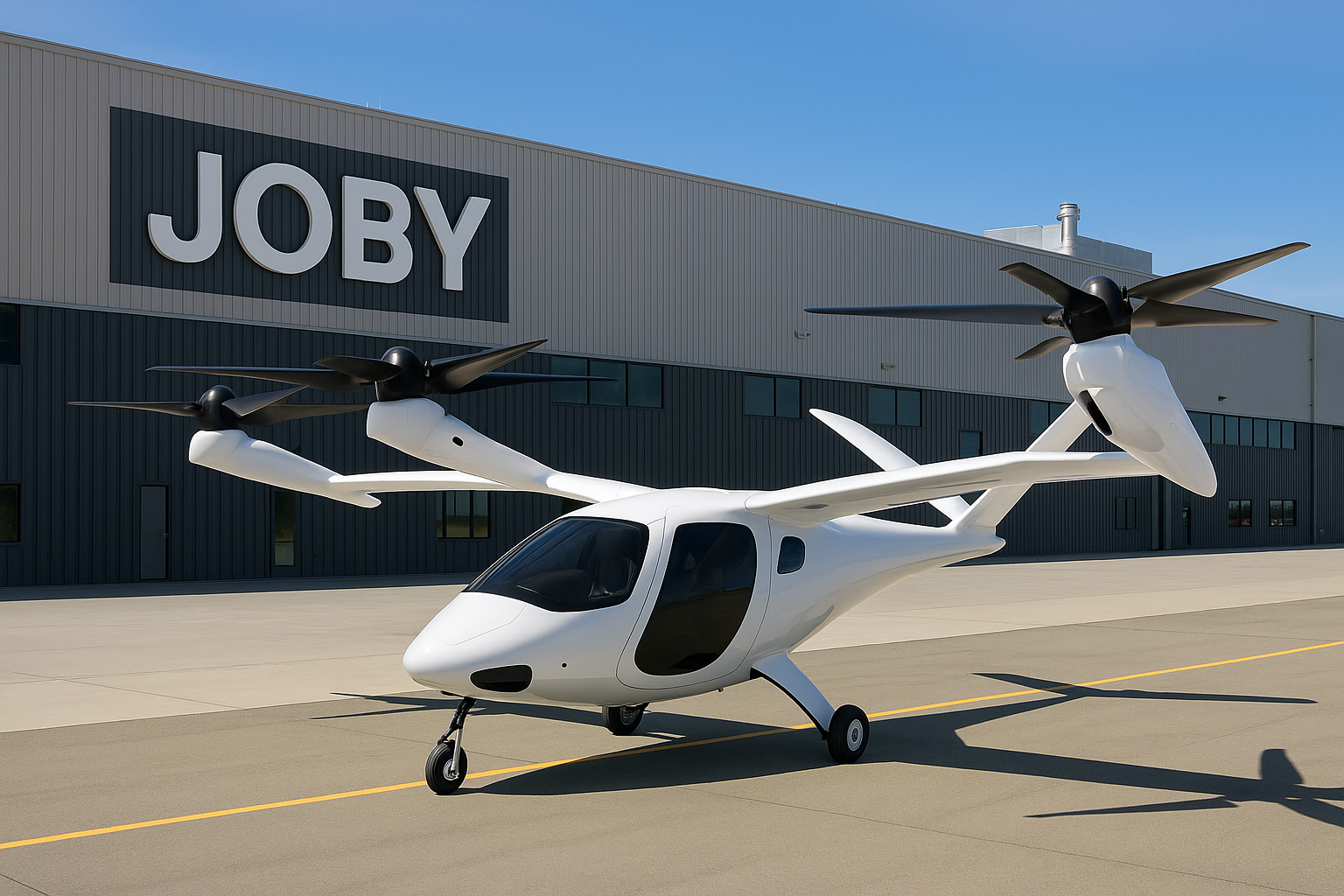Joby Aviation, a pioneer in the electric vertical takeoff and landing (eVTOL) space, is taking a significant leap toward redefining urban air mobility. The recent announcement of a major expansion in its robotaxi production capacity has sent Joby stock soaring, signaling growing investor confidence in the company’s future.
The company revealed plans to double its eVTOL production capacity with a new 435,500 square foot facility in Marina, California. This development marks a pivotal moment in Joby’s journey, pushing it closer to commercial scale operations and mass deployment of aerial ridesharing services.
Scaling Up Joby eVTOL Production: The Facility Behind the Vision
The new manufacturing plant in Marina, California, is more than just a bigger workspace it’s the beating heart of Joby’s ambition. Designed for efficiency and scalability, the facility is expected to become operational soon, giving Joby the ability to meet its lofty commercial targets.
Accelerate robotaxi production, Support Joby’s fleet expansion goals, Integrate advanced automation for quality control, Serve as a hub for logistics and operations
The Backbone of Component Manufacturing
Simultaneously, Joby’s Dayton facility is also ramping up operations. Renovated and modernized, this location focuses on manufacturing and testing critical aircraft components. Its central role in the company’s production pipeline ensures seamless integration between design, testing, and final assembly.
Dr. Michael Cheng, an aerospace manufacturing specialist from Stanford University, commented on the move, “Joby’s dual site strategy with one site focused on final assembly and another on components mirrors best practices seen in automotive and aerospace manufacturing. It’s an efficient model that supports scale and consistency.”
Stock Market Response: Joby Soars on Production News
The announcement had an immediate impact Joby stock surged following the news. Investors are increasingly optimistic about the firm’s transition from prototype to production.
Analysts at Morgan Stanley upgraded the stock, citing, Clear progress toward commercialization, Strong FAA regulatory engagement, Growing demand for urban air mobility
Joby’s test flight program has also expanded, and the company is adding a new aircraft to its testing fleet. This helps demonstrate safety, reliability, and readiness for FAA certification essential factors for mass adoption.
What This Means for the Future of Flying
Jake Foster, a former military pilot and now an early Joby test pilot, shared his experience, “Flying Joby’s aircraft is unlike anything else. It’s smooth, quiet, and remarkably intuitive. The controls feel more like a video game than a helicopter. This expansion means more people will get to experience this soon and that’s exciting.”
Emily Rodgers, an urban planner focused on sustainable transportation, added, “Joby’s expansion is about more than flying cars. It’s about decongesting our cities and making transportation cleaner. If priced right, it could be a game changer for middlebincome commuters.”
Why This Expansion Matters
The global eVTOL market is projected to grow from $8.5 billion in 2024 to over $30 billion by 2030. Joby’s aggressive scaling positions it ahead of competitors like Archer Aviation and Lilium.
Key reasons why Joby eVTOL production is poised to lead, Vertical Integration: From design to flight testing, Joby controls every step. Strong FAA Collaboration, Joby has completed several milestones in the FAA certification process. Adding new aircraft and expanding facilities signals that Joby is not just building buzz it’s building a fleet.
Tesla’s Fremont Factory
Joby’s Marina facility draws parallels with Tesla’s early manufacturing evolution. Like Tesla, Joby is innovating not just on product but also on the production process. Tesla’s transformation from niche EV maker to global automotive leader offers a glimpse into what Joby’s journey might look like if successfully executed.
What’s Next for Joby Aviation?
As the Marina facility becomes operational and Dayton increases output, Joby eVTOL production is set to scale in unprecedented ways. The company expects to begin commercial service as early as 2025, with robotaxi fleets operating in major cities under FAA oversight.
With each milestone, Joby strengthens its claim as a leader in the future of aerial ridesharing. While hurdles remain like public acceptance, infrastructure, and pricing this production boost is a clear step toward transforming everyday mobility.
A Flying Future Within Reach
The buzz around Joby eVTOL production is not just investor hype it’s rooted in real, measurable progress. From expanded facilities to enhanced testing programs and a clear roadmap to commercialization, Joby is charting a bold, strategic path.
In a world increasingly focused on clean energy, congestion reduction, and futuristic mobility, Joby’s progress is more than just a tech milestone it’s a glimpse into a skyward future where cities are quieter, commutes are shorter, and flying is for everyone.


1 thought on “Joby eVTOL Production Expansion: How Doubling Robotaxi Output Is Reshaping Urban Air Mobility”